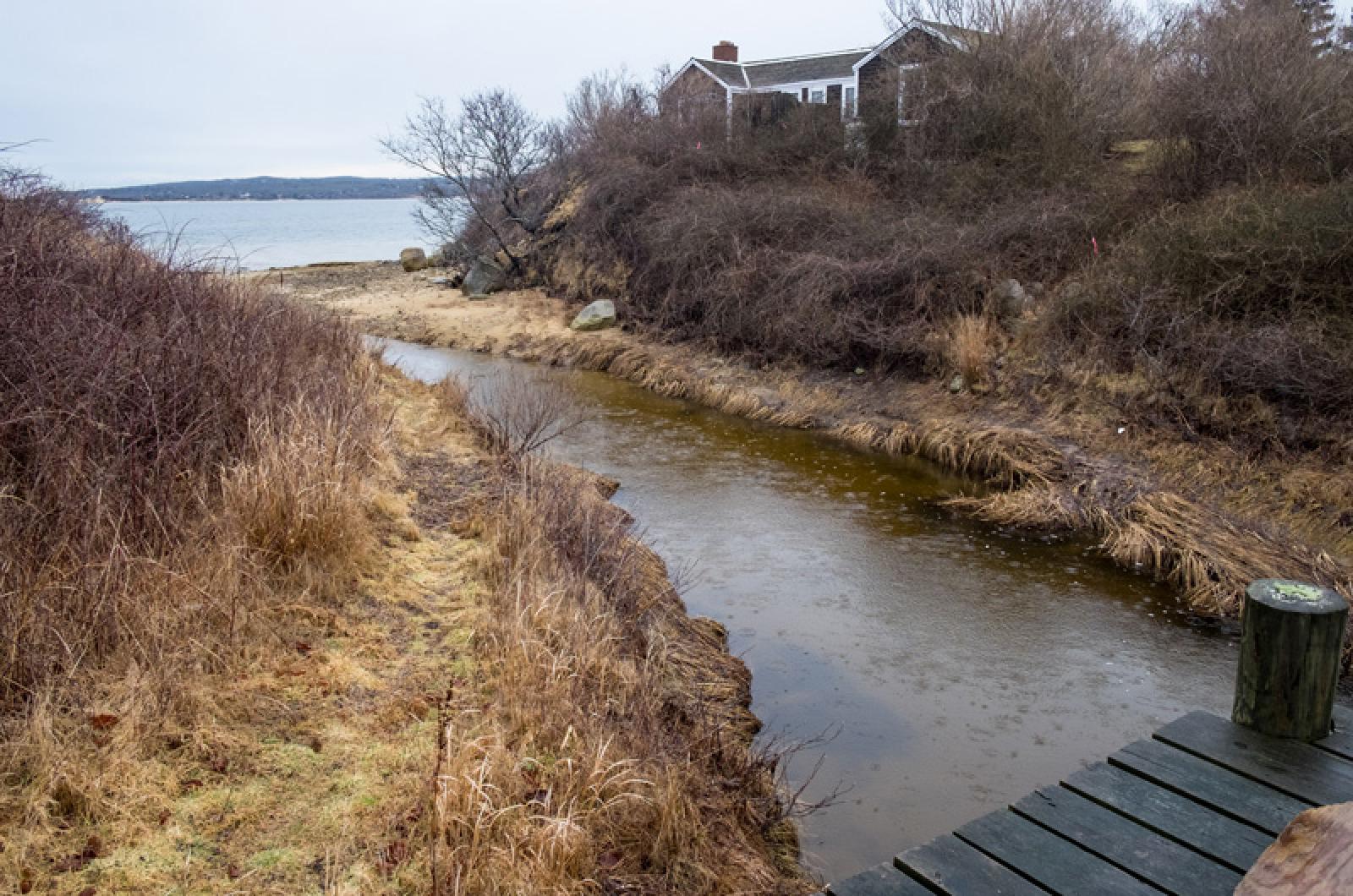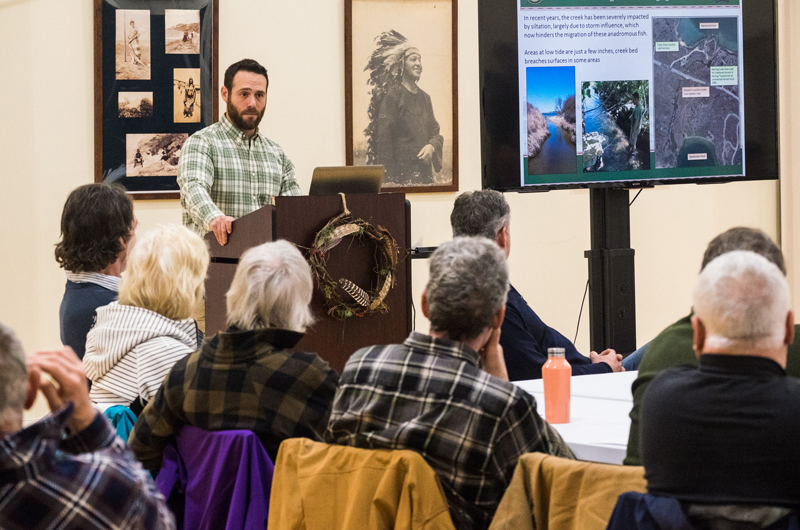Despite strict conservation measures, river herring are in deep trouble all along the Massachusetts coast including on the Vineyard, a summit-like gathering in Aquinnah concluded early this week.
“We are absolutely at a historic low . . . There’s no question,” said Brad Chase, a senior biologist with the state Division of Marine Fisheries, speaking at a forum hosted Monday morning by the Wampanoag Tribe of Gay Head (Aquinnah).
About 35 people attended, including federal and state regulators, harbor masters and herring wardens, town officials, and commercial and recreational fishermen. The event was held at the tribe’s newly completed community center in Aquinnah.
The news was far from upbeat. River herring, also sometimes known as alewives, are in a steep state of decline. Habitat loss, climate change and overfishing by large offshore factory ships are all factors.
Herring are anadromous fish, spending most of their lives in the ocean but swimming up into freshwater streams every three years to spawn. Historically the fish were abundant and used for both food and bait.
Herring fishing has been banned in Massachusetts since 2006 due to dwindling stocks. The exception is at the Wampanoag-owned herring running in Aquinnah, where traditional fishing is still allowed among Native Americans.
On Monday Bret Stearns, natural resources director for the tribe, described a recent project to assess the stock at the herring run located on tribal land at the head of Menemsha Pond.
Working with the state Division of Marine Fisheries, in 2016 the tribe installed an underwater video monitoring system at the herring run that gathered information by automated software.
Citing historical documentation, Mr. Stearns said 1.5 million alewives and blueback herring once passed through the herring run each year.
By the tribe’s count, fewer than 23,000 fish made the journey last year.
“That’s a startling number,” he said. “I was really shocked.”
Mr. Chase showed graph after graph of herring runs along the Massachusetts coastline, all showing striking declines over the past decade of data collection, followed by some modest gains because of community action.
He also outlined efforts the state is making to improve the fishery, including construction and repair of fish ladders and conservation of spawning areas.

Natural mortality, habitat alteration and climate change are all factors that threaten the herring fishery, he said.
But some questioned whether community efforts can outpace overfishing.
Chris Murphy, a retired commercial fisherman from Chilmark, described how large trawlers that ply the waters off the coast of the Vineyard can gather 100,000 pounds of herring in one short sweep of the nets.
“We as a community have to decide if that’s how we want to harvest stuff, or if we want to allow it to come ashore . . . in these little towns,” Mr. Murphy said. “When you harvest it at sea, you just destroy the whole system.”
Tribal member and commercial fisherman Buddy Vanderhoop called overfishing by large trawlers in New England waters the largest factor affecting the low numbers of herring returning to Island bays and ponds to spawn.
“The trawlers are the main problem there is such a decline in the herring fishery,” he said. “If the general public knew this was happening, they would speak up. It’s just not right. This is happening off our coast.”
Tara Lake of the National Oceanographic and Atmospheric Administration (NOAA), outlined the federal government’s evaluation of alewife and blueback herring for possible protection under the Endangered Species Act. NOAA will decide whether protection is warranted, and if it is, whether the two species should be categorized as threatened or in danger of extinction.
That process is due for completion in the spring of 2019.








Comments (15)
Comments
Comment policy »